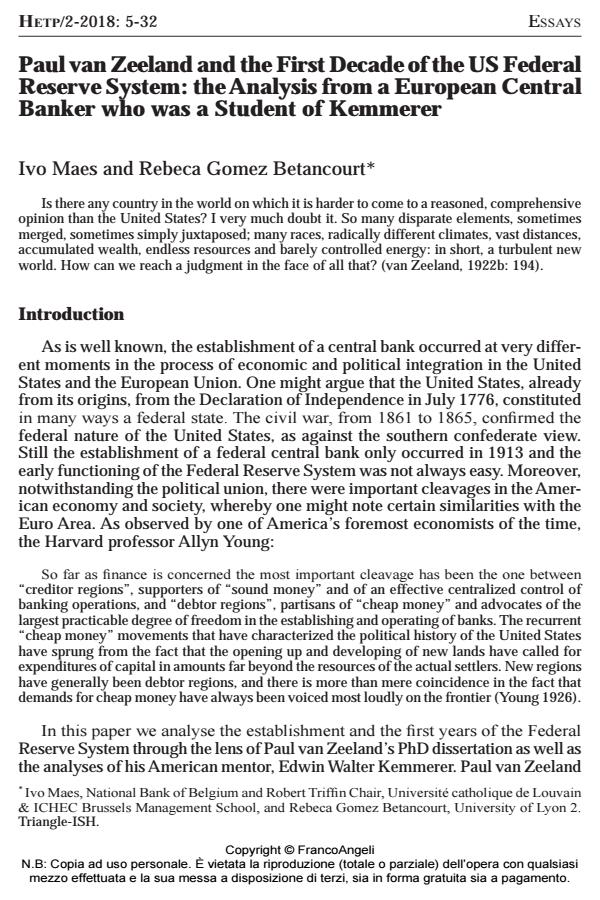Paul van Zeeland and the First Decade of the US Federal Reserve System: the Analysis from a European Central Banker who was a Student of Kemmerer
Titolo Rivista HISTORY OF ECONOMIC THOUGHT AND POLICY
Autori/Curatori Ivo Maes, Rebeca Gomez Betancourt
Anno di pubblicazione 2019 Fascicolo 2018/2
Lingua Inglese Numero pagine 27 P. 5-32 Dimensione file 290 KB
DOI 10.3280/SPE2018-002001
Il DOI è il codice a barre della proprietà intellettuale: per saperne di più
clicca qui
Qui sotto puoi vedere in anteprima la prima pagina di questo articolo.
Se questo articolo ti interessa, lo puoi acquistare (e scaricare in formato pdf) seguendo le facili indicazioni per acquistare il download credit. Acquista Download Credits per scaricare questo Articolo in formato PDF

FrancoAngeli è membro della Publishers International Linking Association, Inc (PILA)associazione indipendente e non profit per facilitare (attraverso i servizi tecnologici implementati da CrossRef.org) l’accesso degli studiosi ai contenuti digitali nelle pubblicazioni professionali e scientifiche
The establishment of a central bank occurred at very different moments in the process of economic integration in the United States and the European Union. In this paper, we go into the first years of the Federal Reserve System through the lens of Paul van Zeeland’s PhD dissertation. Paul van Zeeland (1893-1973) became the first Head of the Economics Service of the National Bank of Belgium in 1921, after his studies in Princeton with Edwin Walter Kemmerer. There are clear similarities in their analyses of the Federal Reserve System, for instance in their adherence to the gold standard and the real bills doctrine as well as in their emphasis on the elasticity of the money supply. Moreover, they shared a view - with hindsight a rather naïve view - that with the Fed in place, financial crises would be a distant memory. However, there were also important differences. So, van Zeeland, like several other economists as Warburg, accorded greater significance to the discount market (a key factor for the international role of the dollar) and to a stronger centralization of the Fed (which would be taken up in the 1935 Banking Act). Moreover, very specific for van Zeeland is the importance given to the Fed’s independence from the State (an element related to van Zeeland’s continental European background and Belgium’s experience of monetary financing during the war).
Parole chiave:Van Zeeland, Kemmerer, Federal Reserve System, financial crisis, banking reform
Jel codes:A11, B1, E58, F02, N23
- Paul van Zeeland, a monetary economist between two worlds Rebeca Gomez Betancourt, Ivo Maes, in The European Journal of the History of Economic Thought /2021 pp.31
DOI: 10.1080/09672567.2020.1746376
Ivo Maes, Rebeca Gomez Betancourt, Paul van Zeeland and the First Decade of the US Federal Reserve System: the Analysis from a European Central Banker who was a Student of Kemmerer in "HISTORY OF ECONOMIC THOUGHT AND POLICY" 2/2018, pp 5-32, DOI: 10.3280/SPE2018-002001